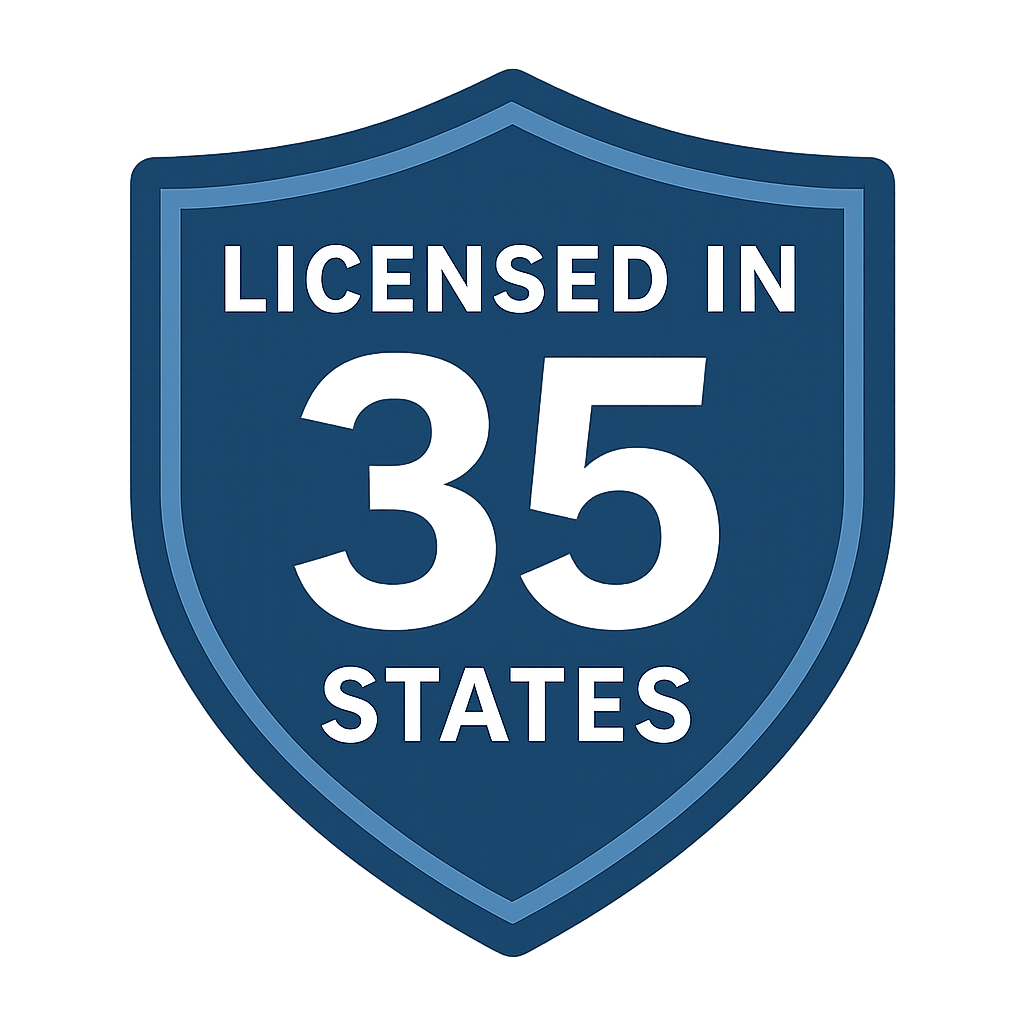Child Car Seat Safety
Protecting Your Child with the Right Car Seat and Proper Use
On this page
Overview of Child Car Seat Safety
Choosing the Right Car Seat
Selecting a car seat based on your child's age, weight, and height is critical for safety. Options include rear-facing, forward-facing, and booster seats, each designed for specific developmental stages. Proper selection reduces injury risk by up to 70 percent in crashes.
Installation and Use
Correct installation using LATCH or seat belts ensures car seats function as intended. Regular checks for secure fit and proper harness use are essential. Many local fire stations offer free inspections to verify safety.
Legal and Insurance Benefits
Complying with state car seat laws avoids fines and ensures insurance coverage in accidents. Proper use can lower injury-related claims, potentially reducing premiums. A Plus Insurance guides you on coverage related to child safety.
Frequently Asked Questions
What are the types of car seats for children?
Rear-facing seats are for infants up to 35 pounds, forward-facing seats suit toddlers up to 65 pounds, and booster seats are for kids up to 100 pounds. Each type aligns with growth stages to maximize safety. Always check manufacturer guidelines for specific weight and height limits.
When should my child use a rear-facing car seat?
Children should stay rear-facing until at least age 2 or until they reach the seat's weight or height limit, often 35–40 pounds. This position reduces spinal injury risk by 75 percent in crashes. Follow safety guidelines for optimal protection.
When can my child switch to a forward-facing car seat?
Switch to forward-facing after age 2 or when exceeding rear-facing limits, typically 40–65 pounds. Use a five-point harness for maximum security until the child outgrows it. Ensure proper fit to maintain safety standards.
When is a booster seat appropriate?
Booster seats are for children who outgrow forward-facing seats, usually 40–100 pounds and 4–8 years old. They position seat belts correctly over the shoulder and lap. Transition to a regular seat belt when the child reaches 4'9" tall.
How do I install a car seat correctly?
Use the LATCH system or seat belt, ensuring no more than one inch of movement at the base. Follow the car seat manual and vehicle owner's guide for proper angles. Local inspections can confirm secure installation.
What is the LATCH system for car seats?
LATCH (Lower Anchors and Tethers for Children) uses built-in vehicle anchors to secure car seats without seat belts. It's standard in vehicles post-2002 and simplifies installation. Check resources for vehicle compatibility.
How tight should car seat harnesses be?
Harnesses should be snug, with no slack, passing the pinch test where you can't pinch webbing at the shoulder. Adjust straps to fit snugly at each use. Loose harnesses reduce safety by up to 50 percent in crashes.
Where should I place a car seat in my vehicle?
The back seat is safest, ideally in the center to avoid side-impact risks. Avoid front seats due to airbag dangers for children under 13. Ensure the position allows a secure, tight fit.
Can I use a second-hand car seat?
Second-hand seats are risky unless you verify no crash history, no recalls, and an unexpired date. Check the manufacturer's label and registration for safety compliance. New seats are safer to ensure full functionality.
What are child car seat laws in most states?
Most states require rear-facing seats until age 2, forward-facing until 4–7, and boosters until 8 or 4'9". Laws vary, so check state-specific regulations via resources. Non-compliance can lead to fines up to $500.
What are the penalties for not using a car seat?
Fines range from $50 to $500 depending on the state, with possible points on your license. Repeat violations may increase penalties or affect insurance claims. Proper use avoids legal and safety issues.
When can a child stop using a car seat?
Children can stop using car seats when they reach 4'9" and pass the seat belt fit test, typically around 8–12 years. The belt should lie flat across the shoulder and lap. State laws dictate exact requirements.
Do car seat laws apply to rental cars?
Yes, state car seat laws apply to all vehicles, including rentals. Parents must provide appropriate seats for children under state limits. Some agencies offer rentals, but verify safety and fit before use.
How often should I check my child's car seat?
Inspect monthly for wear, loose parts, or improper fit, and after every trip for secure installation. Replace seats after crashes or if expired, typically 6–10 years. Regular checks ensure ongoing safety compliance.
When should I replace a car seat?
Replace car seats after moderate to severe crashes, if expired, or if recalled for safety issues. Expiration dates are on the seat's label, usually 6–10 years. Check safety resources for recall updates.
Can car seats be used past their expiration date?
No, expired seats may have degraded materials, reducing safety in crashes. Most expire 6–10 years from manufacture, noted on the label. Replace expired seats to ensure maximum protection.
How do I clean a car seat safely?
Use mild soap and water on harnesses and shells, following the manufacturer's instructions. Avoid harsh chemicals that weaken materials. Air-dry completely to maintain structural integrity.
Are car seat covers safe to use?
Only use covers approved by the car seat manufacturer to ensure crash safety. Aftermarket covers may interfere with harness fit or flammability standards. Check compatibility before adding accessories.
Does car seat use affect insurance claims?
Proper car seat use can reduce injury claims, potentially lowering liability costs in accidents. Non-compliance may complicate claims or lead to fines. Ensure seats meet state laws for coverage benefits.
Can insurance cover car seat replacement after a crash?
Many policies cover replacement of car seats damaged in accidents, even minor ones. Check with providers like State Farm for specific coverage details. Submit receipts and crash reports for reimbursement.
Do car seats impact liability insurance rates?
Car seat use doesn't directly affect rates, but safe driving habits, including proper child safety, may qualify for discounts. Insurers value low-risk behaviors. Consistent compliance enhances your safety profile.
Where can I get a car seat inspection?
Local fire stations, police departments, or certified technicians offer free inspections in most areas. Organizations like Safe Kids Worldwide host events. Schedule via local resources for expert checks.
How do I know if my car seat is recalled?
Check the manufacturer's website or NHTSA's recall database using the seat's model number. Register your car seat for direct recall notifications. Replace recalled seats immediately to ensure safety.
Can I use a car seat in a taxi or rideshare?
Yes, but you must provide and install the car seat, as most taxis and rideshares don't supply them. Ensure proper installation for safety. Some services offer car seat options for a fee.
What are common car seat mistakes to avoid?
Avoid loose harnesses, incorrect recline angles, or using expired seats. Improper installation accounts for 75 percent of misuse cases. Regular inspections and manual checks prevent these errors.
How do I choose a safe car seat brand?
Look for brands like Graco or Britax with high NHTSA safety ratings and easy installation features. Check for JPMA certification and crash-test data. Research via safety guides for trusted options.
Comparison of Child Car Seat Types
Compare key features of car seat types for children based on age and weight as of 2025.
| Type | Age/Weight | Key Features | Average Cost |
|---|---|---|---|
| Rear-Facing | Birth–2 years, up to 40 lbs | Reduces spinal injury risk, 5-point harness | $100–$300 |
| Forward-Facing | 2–7 years, 20–65 lbs | 5-point harness, tether for stability | $150–$400 |
| Booster | 4–12 years, 40–100 lbs | Positions seat belt, backless or high-back | $50–$200 |
Service Area
Child Car Seat Safety Guide
Child car seat safety is a critical aspect of protecting young passengers, reducing injury risk by up to 70 percent in vehicle crashes. Proper selection, installation, and use of car seats based on age, weight, and height are essential for compliance with state laws and ensuring maximum safety. A Plus Insurance provides guidance on how car seat use integrates with auto insurance for comprehensive protection.
Rear-facing seats are recommended for infants until age 2 or 40 pounds, offering superior spinal protection. Forward-facing seats suit toddlers up to 65 pounds, while boosters are ideal for kids up to 100 pounds or 4'9". Incorrect installation, affecting 75 percent of seats, compromises safety, so free inspections at fire stations or via resources are vital. State laws, varying from Alabama to Wyoming, mandate age-appropriate seats, with fines up to $500 for violations.
Insurance benefits include potential reimbursement for car seat replacement post-crash, offered by providers like State Farm. Proper use may also lower injury claims, indirectly impacting liability rates. Parents should avoid common mistakes like loose harnesses or expired seats, checking expiration dates (6–10 years) and recalls regularly. The LATCH system simplifies installation, but seat belts work if installed correctly.
Community resources, like Safe Kids Worldwide, offer education and inspection events nationwide. Regular checks and adherence to manufacturer guidelines ensure ongoing safety. Whether in urban areas like Chicago or rural Montana, child car seat safety is a universal priority. Explore state-specific rules to stay compliant and protect your child.
In summary, child car seat safety combines proper equipment, legal adherence, and insurance integration to safeguard young passengers. From choosing Graco or Britax to scheduling inspections, informed decisions are key. Contact A Plus Insurance to align your auto coverage with child safety needs.
Last Updated on by Shawn Christie




